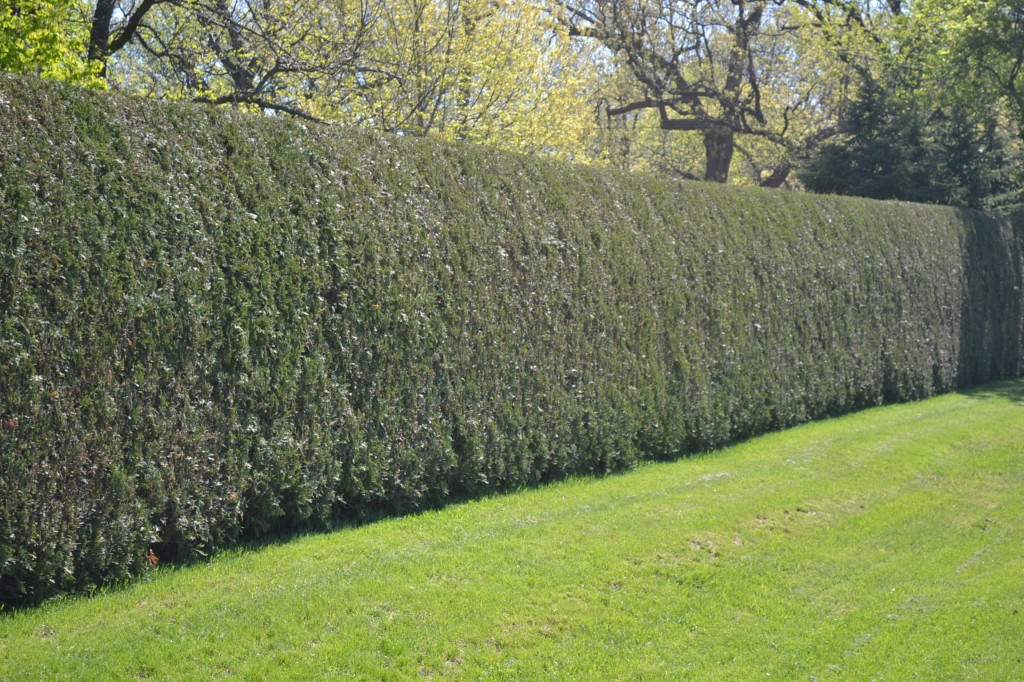Shrub hedge installations are a low-cost way to block the visibility of your property or define a property line. There are many types of plants that make a good shrub hedge like boxwood and techny arborvitae. Since boxwoods are smaller plants, they do well defining property lines or creating boarders. The foliage on the boxwood is small and dense, so the plant does a good job of creating a solid wall. Techny arborvitae on the other hand grows quite tall. Mature plants can reach over 15 feet tall. If you are looking for a good privacy barrier, then techny arborvitae would be a great candidate. The foliage grows dense when pruned on a regular basis and since it is an evergreen, you can count on its use during the winter also.
Some of the most popular plants for a shrub hedge.
- Boxwood
- Techny Arborvitae
- Privet
- Forsythia
- Barberry
- Holly
- Cranberry Cotoneaster
- Juniper
- Lilac
- Yew
- Viburnum
Most shrub hedges should be pruned at least twice a year to ensure their form and size. It is important prune hedges on a regular basis, so they remain tight and grow uniformly. Some evergreens if left to overgrow will become too woody to prune. Once they shrub gets to this point, it will need to be replaced. Pruning on a regular basis will also help the owner monitor any disease or insect damage. If caught early, most diseases and insect damage can be treated. The last thing that you want to happen is for one of your plants in the shrub hedge to die out. This will not only break the solid hedge, but leave bare areas exposed on each side of the plant where the dead plant once was. If you have a mature shrub hedge, it will be harder for you to find a replacement plant that will fit in the hedge. As always it depends on the type of plant and the growth habit of the plant.

